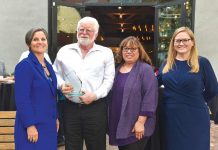South County residents are invited to celebrate the Feast of the
Holy Child
– or
”
Santo Ni
ño
”
– which commemorates an important religions event in the
cultural history of the Philippines.
In 1521, the explorer Ferdinand Magellan landed in the
Philippine port of Cebu
on behalf of the King of Spain.
South County residents are invited to celebrate the Feast of the Holy Child – or “Santo Niño” – which commemorates an important religions event in the cultural history of the Philippines.
In 1521, the explorer Ferdinand Magellan landed in the Philippine port of Cebu on behalf of the King of Spain. Within a week, 1,000 Filipinos – including their leader, Rajah Humabon – were baptized. Magellan marked the occasion by presenting Queen Juana with a wooden statue of the Christ Child.
When the Spanish returned more than 40 years later under Miguel Legazpi, a battle was fought with some natives who were hostile to Spain. The Spanish who came ashore later found a small wooden hut undamaged by the raging fire caused by artillery, and inside, also undamaged, was the statue previously given to the Queen. This miracle was just the first of many attributed to the statue, now called The Holy Child (or “El Senor Santo Niño”).
Devotion to the Holy Child grew. During World War II, Cebu was spared the devastation of Japanese bombing. According to legend, the cloud cover repeatedly hid the city from enemy bombers.
Santo Niño de Cebu has been recognized by the Vatican. In 1964, on the 400th anniversary of Legazpi’s expedition, Pope John XXIII sent a papal legate for the Pontifical crowning of the statue.
The statue itself, a replica of which will be at the St. Mary’s celebration, is a 2-foot tall smiling child dressed in regal robes and crown. He holds the earth in his left hand, while his right hand forms a gesture of peace. He is considered the Divine Protector of the Philippines.
Santo Niño is a major festival in the Philippines, where about 87 percent of the population is Roman Catholic. Dorie Sugay, one of the event organizers, said the celebration usually involves “some dancing to drum beats by different tribes. This dancing originated when they used to worship pagan gods. When the city of Cebu was converted to Catholicism, they started dancing to show praise to Jesus.
“The celebration looks very much like a Mardi Gras celebration, with a twist – the Ati-Athihan or Sinulog dancers are followed by worshipers carrying figurines of the infant Jesus, also dancing to the same beat. (It’s) a visual representation of the evolution of the city’s faith.”
The Gilroy celebration will include a procession into the church, an English Mass with Filipino and English songs, and special prayers to Santo Niño. Participants are invited to bring their statues to be blessed. A potluck meal will welcome all who participate in the happy occasion.
Gilroy’s Holy Child Feast will be sponsored again this year by St. Mary’s Phil-Am Community as a chance to share with others an aspect of their Filipino culture. New officers of the club have been announced: Dorie Sugay, president; Luis Velacion, vice president; Evelyn Miranda, treasurer; Beth Guzman and Beth Lauder, secretaries.
“The more people know about each other, the more people share something of themselves, the easier it is to break down barriers,” Sugay said. “We all benefit from the American culture. We hope that by sharing what we are all about, the South County community will also benefit from what we have to offer.”
Chuck Flagg teaches English at Mt. Madonna High School. Write to him at P.O. Box 22365, Gilroy, Calif. 95021.
Celebrate Santo Nino
– WHAT: A celebration of the Holy Child
– WHEN: 11:45am, Jan. 28
– WHERE: St. Mary’s Catholic Church, 11 First St. in Gilroy
– INFO: (408) 847-5151












